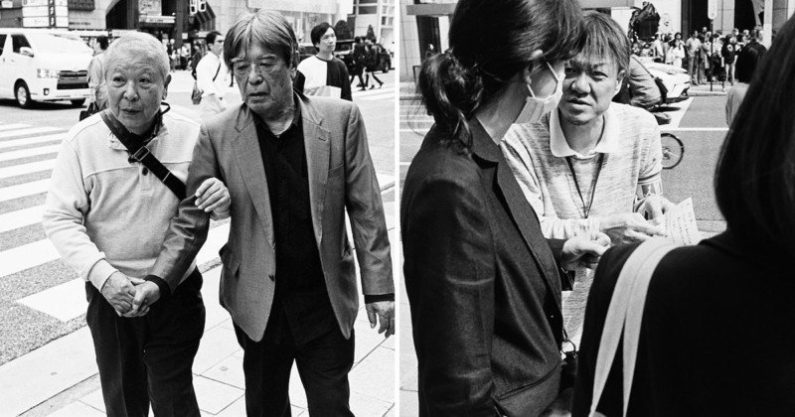
![]()
I see a lot of articles across the Internet claiming to know the “rules to follow” or the “things to avoid” in street photography, easily one of the most hotly debated genres. What they tend to misunderstand is just how little the genre cares for photographic rules, and what the defining elements of street photography really are that go beyond any of the purely photographic elements.
If you study the history of the genre and the work of those that came before us, you’ll start to understand that the rules of photography, while important, are generally irrelevant to the real strength behind the most intriguing street photographs. Composition, framing, and light are always important in each genre, but in street photography they don’t take center stage like they might in landscape photography.
The strongest street photography ultimately tells us something about ourselves, about how fleeting and arbitrary our lives can sometimes feel, and can even reveal moments that we may never notice as we speed through our daily lives.
Invoke Questions On The Street
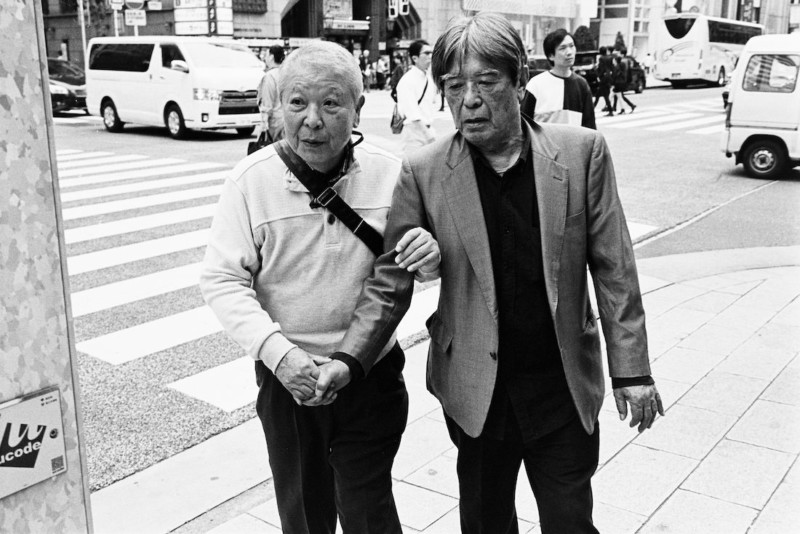
Could they be brothers? Or is that a woman on the left? Are they old friends? Why are they holding hands? Is something wrong with the man on the right? Is he ill?
I was trying to think of the best way to describe not necessarily how to achieve great street photographs, but to describe the fundamental nature of what they do to us as viewers; why they intrigue us more than other work. “Invoke questions” seemed to fit the task the best.
I’ve been practicing street photography since around 2014 when I began to get involved with other photographers who loved the style and accessibility of the genre, but it took me until recently to become aware of just what made the best street photography most fascinating.
Like everyone else, I’ve made countless photographs of people walking past me, of a person walking along a wall, of a crowd, or simply seen something with interesting light and taken the photo, but these photographs have served a purpose, to tell me what is interesting and what is not.
Mystery & Narrative
The problem with a lot of street photography is that there is little to no narrative being suggested, such as the commuter walking along a wall mid-step or the person stepping into a shaft of light. In contrast, the most intriguing photographs will have questions flying around them and may even puzzle your viewers as to what is going on. Your viewers may start to build a narrative in their minds, whether truthful or imagined, due to the circumstances of the subject matter and timing.
Take the photograph below for example. In the center of the frame we have a woman wearing a mask with a man who seems to be questioning her, and curiously in the top left corner is someone asking for what seems like a donation while wearing more traditional Japanese garments and a hat that seems out of place in central Tokyo.
What draws me in is the man’s face. What is he doing? Is he harassing her? Does he know her? What is he trying to sell to her?
By arriving at that last question, I’ve started to imbue some kind of potential narrative on the scene, and that is where intriguing street photography begins. I haven’t answered any questions, but I’ve suggested to myself some kind of narrative based on my own personal experience, something I can relate to in a personal way.
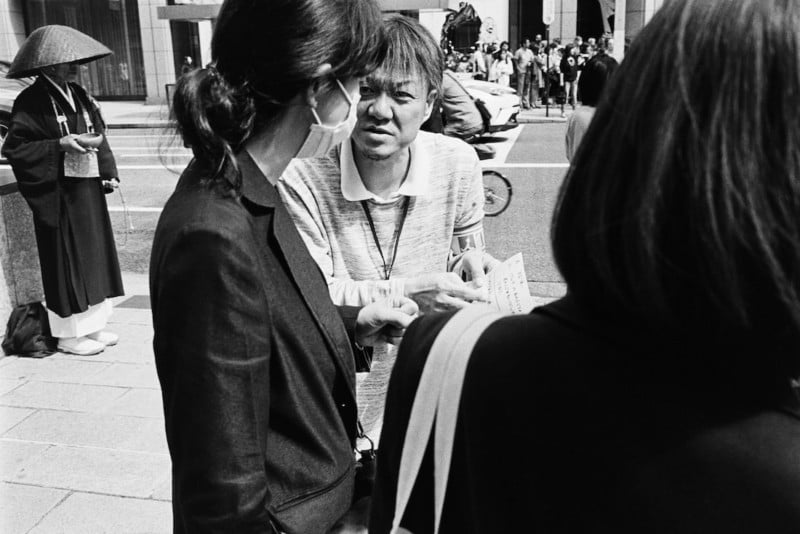
Not all street photographs are this straight forward. Many have no clear questions to ask but are still fascinating for other reasons. This rule of invoking questions is more of a waypoint to guide you. The problem for someone wanting to improve on their street photography is that there are no hard and fast tips. I’m the first person to understand that you can’t exactly go looking for “questions” as if they are floating above people’s heads.
The best advice I can give, as only a student of those that came before me, is to do just that. Study the greats, from Henri Cartier-Bresson to Joel Meyerowitz, Fred Herzog, William Eggleston, Elliot Erwitt, Vivian Maier, Dorothea Lange, and others. Their names are on the walls for a reason.
Then find contemporary street photographers doing great work and try to see how the two groups meet in a modern environment. One of my favorite contemporary street photographers is Severin Koller, but his work seems timeless due to its fundamental nature of capturing fascinating and sometimes puzzling moments of human life irrespective of light or visual beauty.
Pay attention to people, their actions, and their potential motives and you’ll start to instinctually move toward areas where something “may happen”, or you’ll see things happening in your periphery and if you’re ready, you can capture the moment at the perfect moment.
One suggestion I personally have is to work on your timing of the shutter. Learn to wait until the action is at its halfway point, such as someone speaking or an arm being raised in gesture or a person running down a street is halfway through their stride. This suggests action and action suggests narrative.
When Is It Something Else?
Street photography is a broad genre, one that defies boundaries in a lot of ways because it is so fundamental to human nature, so it’s interesting to figure out just where the genre fades and a photograph starts to become something else.
Take the photographs below. While I can definitely say these are street photographs because they tick the necessary boxes, are they something other or perhaps something more?
When the clear narrative questioning makes way for graphical composition, I think the work has started to transition into fine art composition more than literal street photography.
These photographs are visually composed more deliberately to balance the elements into a piece that could be printed and framed on a wall. The environment and the light has started to take on a larger role, which is where fine art begins and street photography lessons to a degree.
That is not to say these are any less worthy as street photography, but simply that they will play a different role in your work. They may even become the photographs that sell more due to their more deliberate visual appeal.
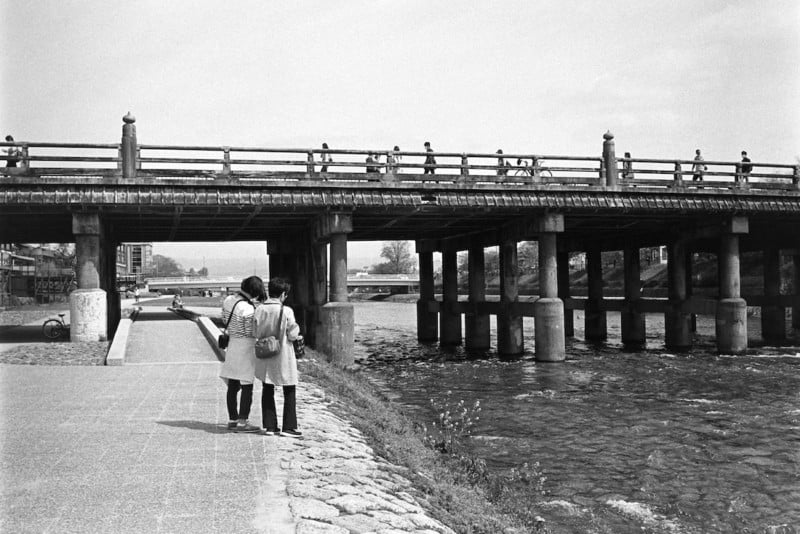
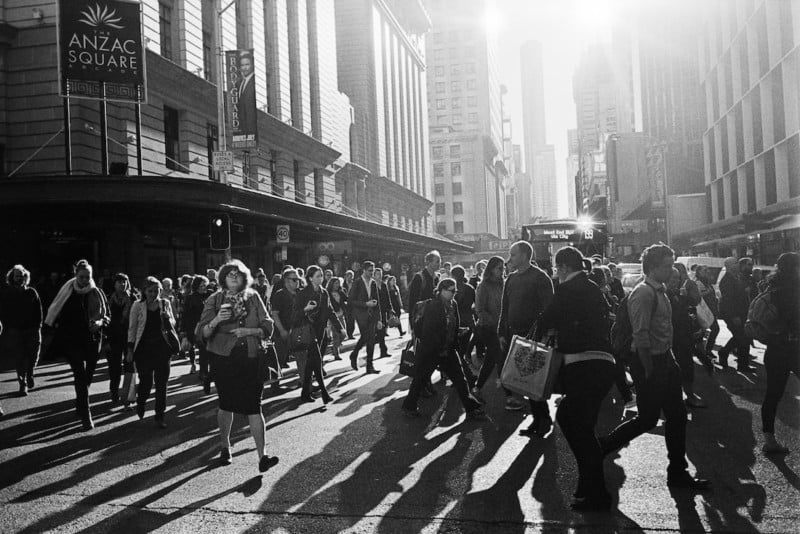
The Takeaway
Street photography is hard. It challenges our observational skills, our sense of vulnerability and our ability to react at a moment’s notice, which is why it can be so rewarding to finally capture something that others may have never noticed and to walk away with work that can hopefully stand the test of time and be remembered.
Remember that us humans love to ponder narratives and pose questions on circumstances inside and outside ourselves. From childhood we are curious creatures, asking questions of our parents then of our friends and peers as we grow up.
We wonder about other’s lives and what ours might be, so to find photographic moments that also ask us to question, to ponder and to be intrigued by seems only natural.
About the author: Nick Bedford is an documentary and fine art photographer based in Brisbane, Australia. The opinions expressed in this article are solely those of the author. You can find more of Bedford’s work on his website, YouTube, and Instagram. This article was also published here.

